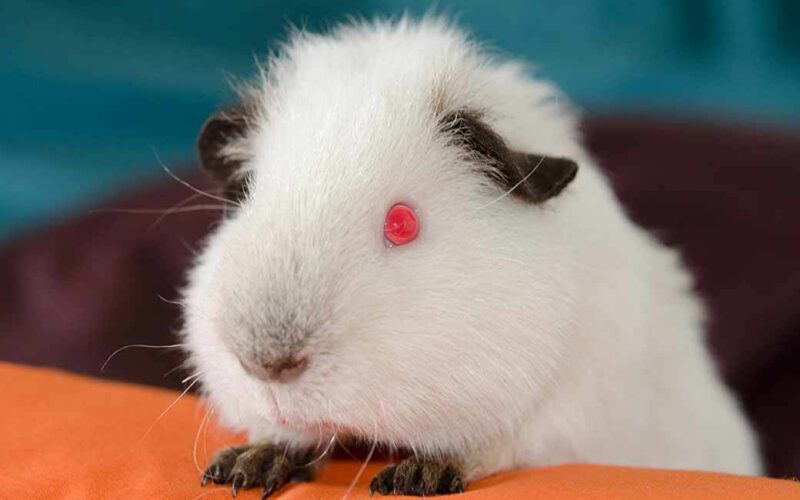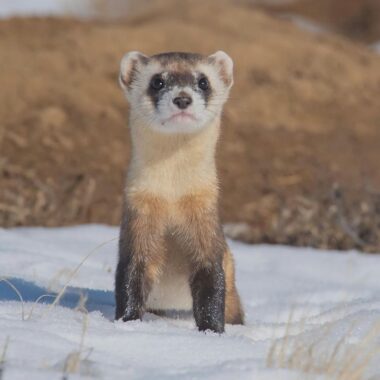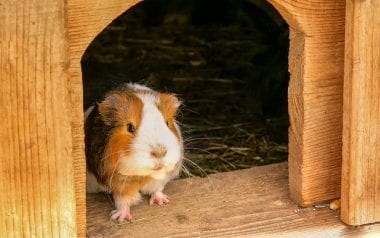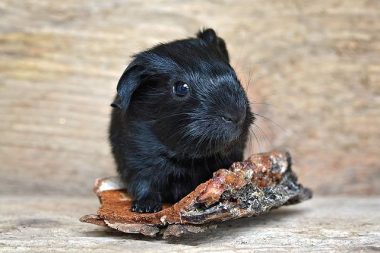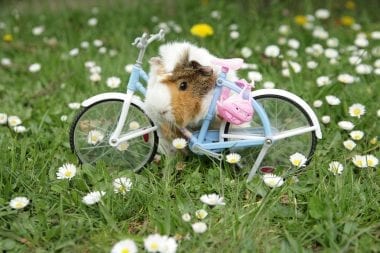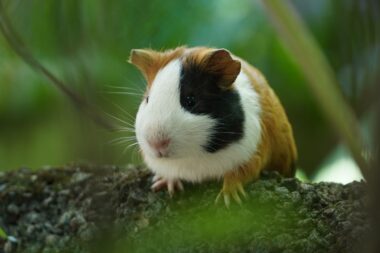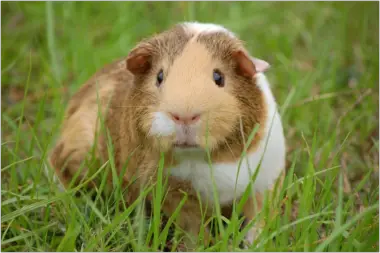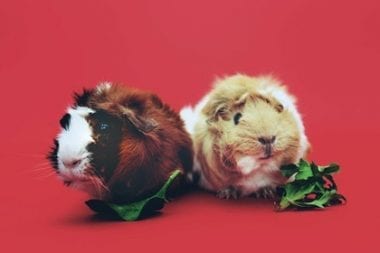Himalayan Guinea Pig is a cute furry albino pig that originally came from South America. The pleasing appearance of the Himalayan Guinea Pig makes it popular among people, and they wish to keep it as their pet. The average-sized guinea pig has an appearance similar to Siamese Cat, the white-colored pig has cute little red eyes.
This is a rare breed of Guinea Pig that can be found in a few regions only. But, these cute adorable creatures are friendly, sociable and people love to keep them close to themselves.
Himalayan Guinea Pig as a pet:
Though cats and dogs are most popular in the category of pets several other animals are coming in this favorite list. One such animal is the Guinea Pig, the size, low maintenance cost, and easy handling makes them more likely to be a pet.
In case you have a kid also Himalayan Guinea Pig as a pet then they will easily create a bond with each other. But, you must be cautious and should look after how your kid is handling them. You should guide your kid and show them the perfect way to hold Himalayan Guinea Pig.
What is Himalayan Guinea Pig?
The rarely known Himalayan Guinea Pig is a unique breed of American Guinea Pig. They derived their name because of their appearance especially the markings and coloring that makes them look like Himalayan Cat. However, this gives them the name Himalayan Guinea Pig. With a lifespan of around 5 to 7 years, they are relatively popular pets that turn to be great sociable pets.
The appearance of Himalayan Guinea Pig
Born as an albino covered with a thick white coat of fur or mid-length hair. These easy-to-style Guinea Pigs change their coat color according to the region and climate in which they are living. In colder weather their spots seems to darken and in comparatively hotter climate their spots fade away. Even as, they grow old the spots seem to fade.
Coat:
These cute Guinea Pigs have mid-length fur, it is evident that Himalayan Guinea Pig has rosettes on them. Also, their coat is very soft and smooth.
Color:
Himalayan Guinea pigs are usually white, and they have certain black spots around their ears and nose. The typical color of eyes of this Guinea Pig is pink. Also, the color of the nose, ears, and feet is either black or brown. Though they are white but the color changes as per their environment of existence. For example, if Guinea Pig is living in hot conditions then they are lighter as compared to those living in a colder climate.
Size:
Himalayan Guinea Pig usually stays of medium size that ranges from 8 inches (20.32 centimeters) to 12 inches (30.48 centimeters). The average size of Guinea Pig stays within a certain range only.
How to take care of Himalayan Guinea Pig?

Like humans, animals also need certain care. Though they do not require much care because they are easy to handle but few basic routine cares are required. If you wish to keep your pet away from health issues then, you must follow and look out for their health care. Below are given certain routine care steps which you should follow to keep your Guinea Pig healthy and odor-free.
1. Feed them with vegetables and grass daily also provide them clean and fresh water.
2. Clean their cage and look for their hygienic conditions on weekly basis. Also, take care of their bedding, their bed should be laid out cleanly.
3. Brush their fur with firm hands or lightly brush them every week. The short to mid-sized fur of Guinea Pig requires attention to make them look tidy.
4. Whenever you find, their nails long try to trim them. Usually, their nails grow in 8 to 10 days.
5. To keep them clean and odor-free you need to make them bathe within 3 to 12 months. So, keep them tidy all the time to keep them away from bad odor.
You can control their odor by changing their bedding. However, the caring pattern of a baby Himalayan Guinea Pig is totally different. The way a human baby needs special care and attention is the same way baby Himalayan Guinea Pig needs attention. Here is how you can take care of a baby Himalayan Guinea Pig.
How to take care of Baby Himalayan Guinea Pig?
The baby Himalayan Guinea Pig is born with an average width of around 3 inches (7.62 centimeters) to 5 inches (12.7 centimeters). These babies should be kept with their mother for about 3 weeks of their birth. You should be extremely careful about their nutrition and food in the initial weeks, as baby Himalayan Guinea Pig tends to get affected by the diverse condition and inappropriate food.
You should be well aware of the parent’s as well as the child’s health. Keeping knowledge in advance about any health issue of your Himalayan Guinea Pig will be best.
How is Himalayan Guinea Pig about their personality and behavior?
Himalayan Guinea pigs are almost like other Guinea Pig when it comes to their habits. Their friendly nature and cuteness make them more adored by humans. They have very particular personalities and habits, like little babies, they get frightened easily and loves to be taken care of.
They become the best family pets who love to stay inside and can easily adapt to their surroundings. Though, they are not comfortable with extreme temperatures but living in a cold or hot climate is not a big task for them. They are over-sensitive to sunlight so exposing them to more sunlight can be a problematic situation. Like their appearance, in nature, they appear to be calm and compliant.
Though Guinea Pig is easily handled, sometimes they love spending time alone too. Also, they love being with other Guinea Pig especially with Himalayan Guinea pigs.
Important Tip: If you wish to multiple Guinea Pig then prefer buying of the same gender as in future they will multiply further. In case, you want to have more Guinea Pig then keep a couple of Himalayan Guinea Pig as a pet.
What is the diet of Himalayan Guinea Pig?
To keep your pet alive for a long time and confirm their better health, you should serve your pet a good diet. Since they are herbivores in nature, so they love vegetables, fruits, and especially hay. But, avoid serving them too much sugar as it becomes concerned with digestion in your cavy. Sometimes serving them extremely juicy fruit will create problems for you as they will create mess by spilling it here and there. In vegetables, you can feed them the following vegetables:
- Carrot Tops
- Parsley
- Lettuce
- Tomatoes
Also, for a good occasion you can feed them with given fruits too:
- Strawberry
- Banana
- Apple
- Peach
Apart from that, you can serve Guinea Pig butter and hay. Also, don’t forget to provide them with clean and fresh water with food. You can buy food from a grocery store as it is readily available. One most important tip is that don’t feed them a lot because it might create stomach issues for to Himalayan Guinea Pig.
Himalayan Guinea Pig lifespan and health:
It is observed that these cute creatures do not have a long lifespan, after taking good care of them you can expect them to live for around 5 to 7 years. Usually, they remain healthy if they get proper nutrition and diet throughout their life. At times, they demand extra attention and care.
It is found that Himalayan Guinea pigs have vitamin C deficiency which is common in this breed. This happens because of Himalayan Guinea Pig lacks production of vitamin C, and they depend only on food to get it. Sometimes there are several other health issues pops up like skin issues which include parasites, or bumble foot. If they are taken, good care to keep them well.
Interesting facts about Himalayan Guinea Pig:
These interesting facts about the Himalayan Guinea Pig will blow up your mind.
1. The names of Guinea Pig suggests they belong to pig, but that’s not the case they are not at all related to pigs. They are rodents and not pigs.
2. These little pets don’t require much sleep. The tiny guinea pig doesn’t sleep for long, they are awake for around 20 hours a day.
3. Guinea pigs are known to live a short life as their lifespan ranges from 5 to 7. You will be shocked to know there is a record showing that a guinea pig has lived for 14 years and 10 months. The proper nutrition and suitable climate can help them live a longer life.
4. They were not originated from Asia or the Himalayas, but were founded in South America.
5. Since they are not actual pigs, so they don’t possess any bad smell, but to keep them away smell you should keep on grooming them well.
